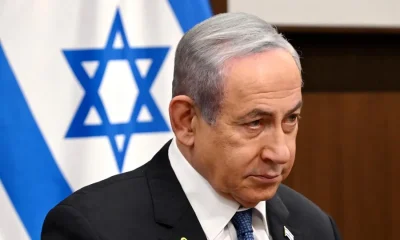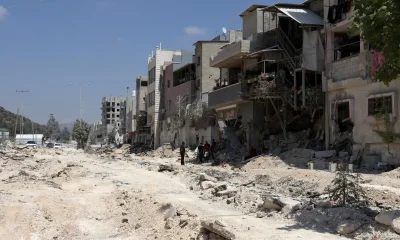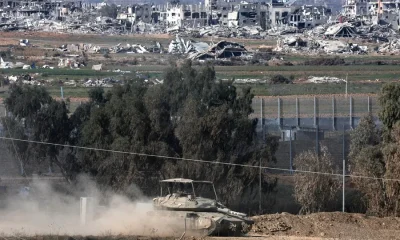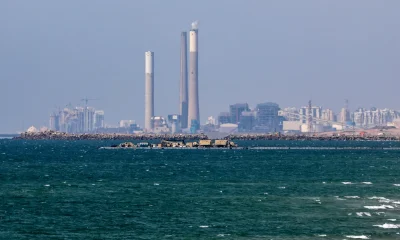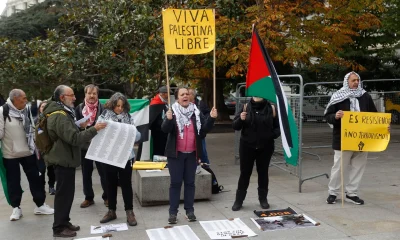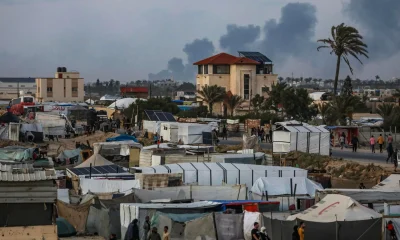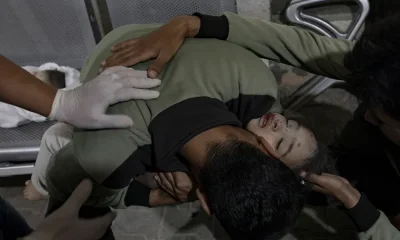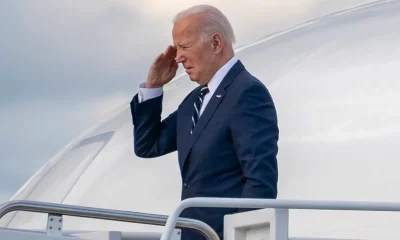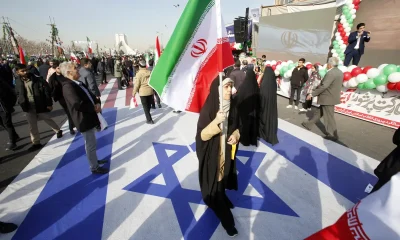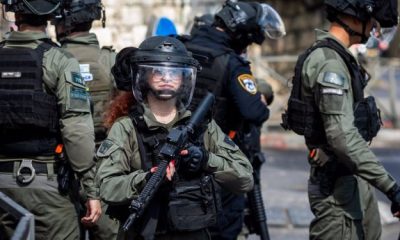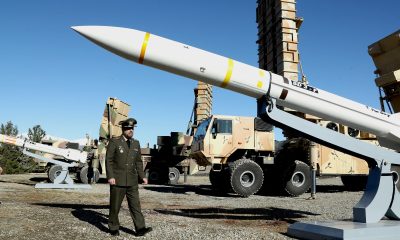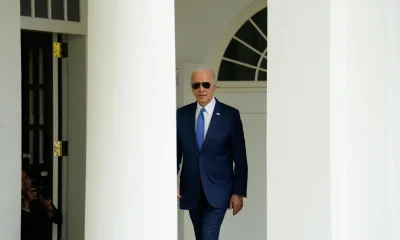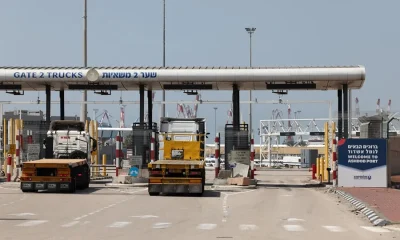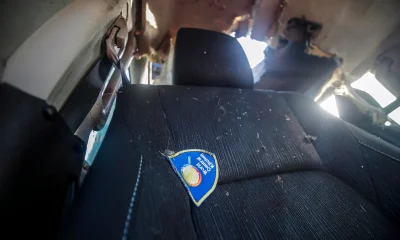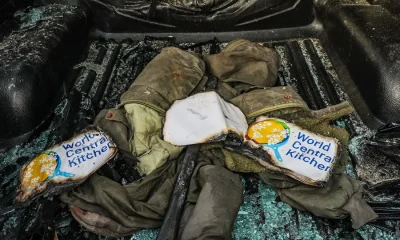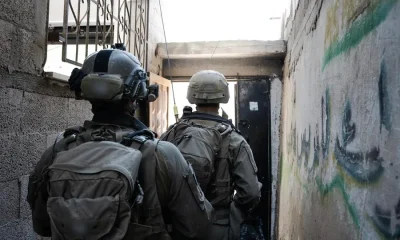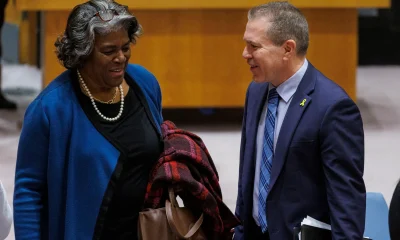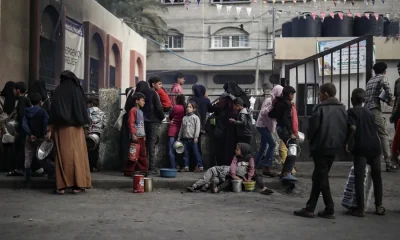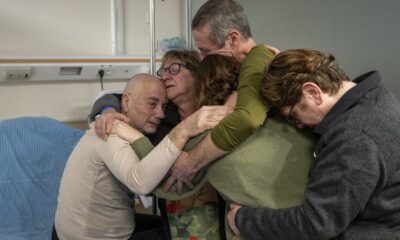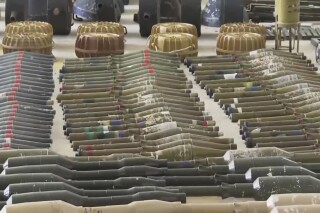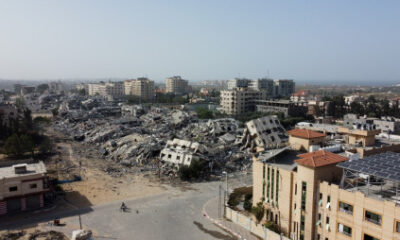International
Israel operates throughout the city of Rafah and leaves more than 25 dead in attack on displaced people
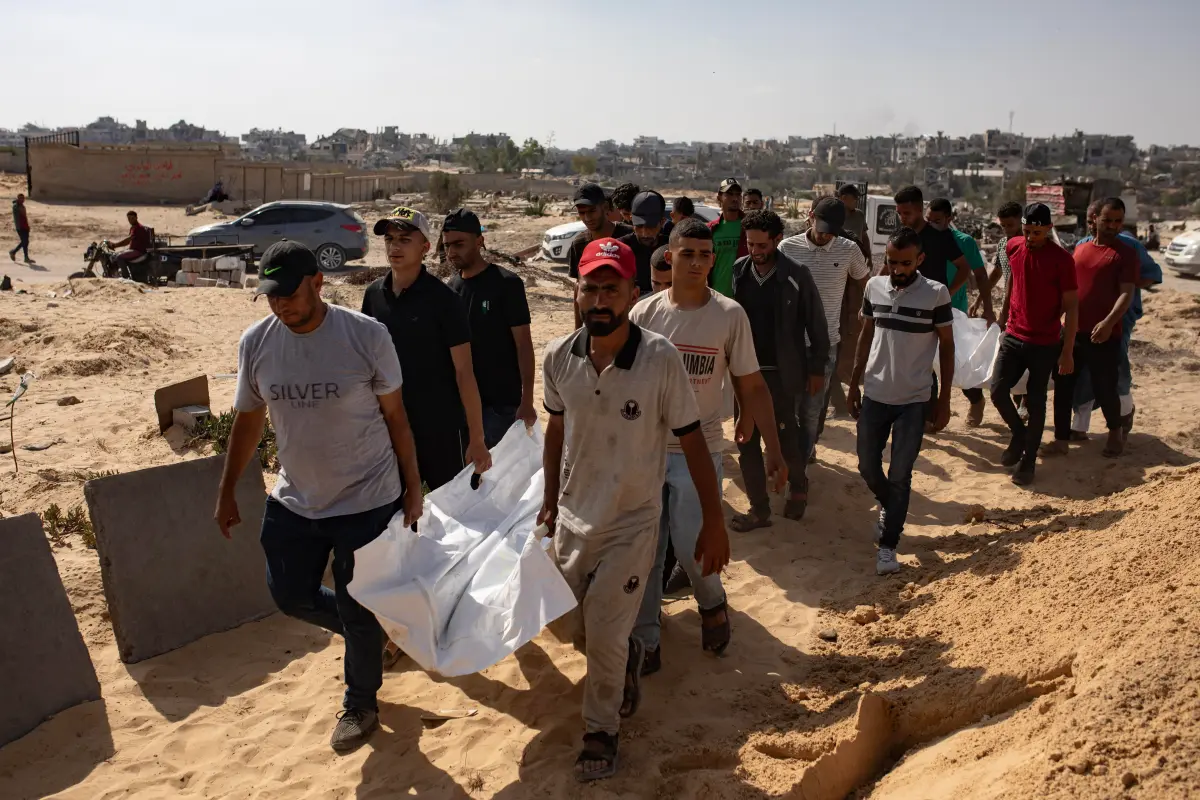
The Israeli Army intensified its attacks and incursion in the heart of the city of Rafah, southern Gaza, as well as on its western side; causing, according to medical sources, at least 25 deaths in an attack on displaced people’s tents – which is not attributed – and great destruction in residential neighborhoods.
As Palestinian sources confirmed to EFE, the attacks are now concentrated in Al Auda, in the center of the city of Rafah, and in Tal al Sultan, a neighborhood in the northwest. The southern and east areas are already under their control weeks after the Israeli tanks began their incursion into the city, on May 6.
“The whole city of Rafah is an area of Israeli military operations,” Ahmed al Sofi, mayor of Rafah, said today in a statement released by the Palestinian Islamist group Hamas on Telegram. “The city is experiencing a humanitarian catastrophe and people are dying inside its tents due to the Israeli bombings.”
Sofi added that there is no medical center left in operation in the city and that residents and displaced people – according to UNRWA about 65,000 people, although before the military incursion there were 1.4 million Gaza refugees in Rafah – cannot meet their daily needs for food and water.
The third point of intense military activity, according to local sources to EFE, is still the so-called Philadelphia corridor, the 14-kilometer border line with Egypt that Israel aspires to control, according to military sources, in order to cut the network of tunnels that supplies Hamas and helps it both to rearm itself and to attack.
In this area, the destruction of infrastructure is being absolute, and a kind of buffer strip has been created, as in the Saudi Quarter of Rafah (west), where units of Army engineers are flying residential buildings.
Since this morning, at least 25 Gaza people died and 50 were injured after an Israeli bombing of displaced people’s stores in Al Mawasi, northwest of Rafah, according to the Ministry of Health, an event that the Israeli Army, after a preliminary investigation, claims to be unaware of but claims to be investigating.
In the northern city of Gaza, at least 17 Gazans died: ten after Israeli fighters bombed a home in Beach Camp, five municipal officials in an attack in the center of the city and two others in attacks in the Zeitun neighborhood, the Palestinian agency Wafa reported.
In addition, two more Gazazians lost their lives today north of the city of Rafah, in the neighborhood of Khirbet al Adas, according to Palestinian sources, which would increase the total number of deaths to 37,470 in eight and a half months of Israeli offensive.
In the north, the lack of food and food is still a critical issue. According to UN data from July 1 to 18, of the 61 coordinated humanitarian assistance missions in northern Gaza, only 28 – 46% – were facilitated by the Israeli authorities, details the UN Agency for the Coordination of Humanitarian Affairs (OCHA).
“The absence of healthy food and drinking water accelerates the spread of diseases,” Hosam Abu Sfiya, the director of the Kamal Adwan Hospital, in the northern Strip, warned today in a statement. “We have not received any essential supplies in the northern Gaza Strip, especially food for children.”
The reality in the enclave is that only a tiny minority can eat regularly, in the absence of food or unaffordable prices. Many do it once a day and there is a lack of milk and porridge, denounce organizations on the ground. In addition, the shortage of fuel forces you to burn plastic or firewood to cook.
Some diseases are re-emerging, such as hepatitis and gastroenteritis.
“All we can offer are some medical solutions for malnourished children,” Hosam Abu Sfiya continued. “We demand the entry of fuel, food and medical supplies.”
For its part, the NGO Doctors Without Borders (MSF) warned today of the psychological trauma that the war is causing to the children of Gaza, with some not wanting to continue living surrounded by so much death.
“What we are seeing in young children, especially, are symptoms of depression because they have lost everything. They have lost their parents, their siblings, their home, their toys, everything that made their daily life normal,” the organization said in a statement.
International
Police investigate deaths of Rob Reiner and wife as apparent homicide

The Los Angeles Police Department (LAPD) is investigating the deaths of Hollywood actor and filmmaker Rob Reinerand his wife as an “apparent homicide,” amid a wave of tributes to the director of classics such as When Harry Met Sally.
According to U.S. media reports on Sunday, Rob Reiner and Michele Singer Reiner were found dead at their Los Angeles mansion with what appeared to be stab wounds.
Several political figures shared messages of condolence following the reported deaths of the director of A Few Good Menand his wife.
While the LAPD did not officially confirm the identities of the victims, it stated that homicide detectives were dispatched to the Reiner residence.
“At this time, no additional details are available and the investigation into an apparent homicide is ongoing,” the Los Angeles Police Department said in a statement posted on social media.
LAPD Deputy Chief Alan Hamilton told reporters that no arrests have been made and that no individuals are currently being questioned as suspects.
“I’m not going to confirm whether anyone is being questioned at this moment or not. We are going to try to speak with as many family members as we can,” Hamilton said.
CNN reported that a family spokesperson confirmed the deaths of Reiner and his wife.
California Governor Gavin Newsom, former U.S. President Barack Obama, and former Vice President Kamala Harrisissued statements expressing their condolences.
International
U.S. and Mexico Reach Deal to Address Water Deficit Under 1944 Treaty

The United States and Mexico have reached an agreement to comply with current water obligations affecting U.S. farmers and ranchers and for Mexico to cover its water deficit to Texas under the 1944 Water Treaty, the U.S. Department of Agriculture said in a statement.
The department уточified that the agreement applies to both the current cycle and the water deficit from the previous cycle.
On Monday, U.S. President Donald Trump accused Mexico of failing to comply with the water-sharing treaty between the two countries, which requires the United States to deliver 1.85 billion cubic meters of water from the Colorado River, while Mexico must supply 432 million cubic meters from the Rio Grande.
Mexico is behind on its commitments. According to Washington, the country has accumulated a deficit of more than one billion cubic meters of water over the past five years.
“This violation is severely harming our beautiful crops and our livestock in Texas,” Trump wrote on Monday.
The Department of Agriculture said on Friday that Mexico had agreed to supply 250 million cubic meters of water starting next week and to work toward closing the shortfall.
Agriculture Secretary Brooke Rollins, quoted in the statement, said Mexico delivered more water in a single year than it had over the previous four years combined.
Trump has said that if Mexico continues to fall short of its obligations, the United States reserves the right to impose 5% tariffs on imported Mexican products.
Mexico’s Deputy Foreign Minister for North America, Roberto Velasco, said that a severe drought in 2022 and 2023prevented the country from meeting its commitments.
International
Several people shot in attack on Brown University campus

Several people were shot on Saturday in an attack on the campus of Brown University, in the northeastern United States, local police reported.
“Shelter in place and avoid the area until further notice,” the Providence Police Department urged in a post on X. Brown University is located in Providence, the capital of the state of Rhode Island.
U.S. President Donald Trump said on his social media platform Truth Social that he had been briefed on the situation and that the FBI was on the scene.
At 5:52 p.m. local time (11:52 p.m. GMT), Brown University said the situation was still “ongoing” and instructed students to remain sheltered until further notice.
After initially stating that the suspect had been taken into custody, Trump later posted a second message clarifying that local police had walked back that information. “The suspect has NOT been apprehended,” the U.S. president said.
-

 Central America4 days ago
Central America4 days agoHonduras election crisis deepens as CNE president denounces intimidation attempts
-

 International4 days ago
International4 days agoCuba battles out-of-control dengue and chikungunya epidemic as death toll rises to 44
-

 International4 days ago
International4 days agoColombia says it would not reject Maduro asylum request as regional tensions escalate
-

 International1 day ago
International1 day agoPolice investigate deaths of Rob Reiner and wife as apparent homicide
-

 Central America2 days ago
Central America2 days agoPanama seizes over three tons of drugs hidden in Caribbean port container
-

 International3 days ago
International3 days agoSeveral people shot in attack on Brown University campus
-

 Central America1 day ago
Central America1 day agoOAS urges swift recount in Honduras as election results remain uncertain
-

 International4 days ago
International4 days agoEcuador on track for record violence as homicides hit highest level in Latin America again
-

 International3 days ago
International3 days agoU.S. and Mexico Reach Deal to Address Water Deficit Under 1944 Treaty
-
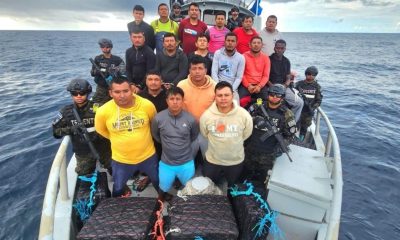
 Central America7 minutes ago
Central America7 minutes agoEl Salvador ranks among top countries in the Americas in fight against organized crime
-
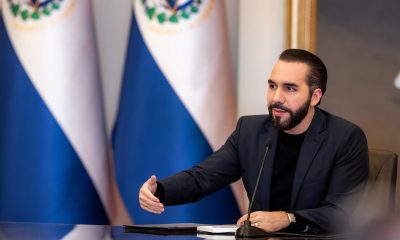
 Central America4 minutes ago
Central America4 minutes agoBukele says AI partnership with xAI will transform public education in El Salvador

























